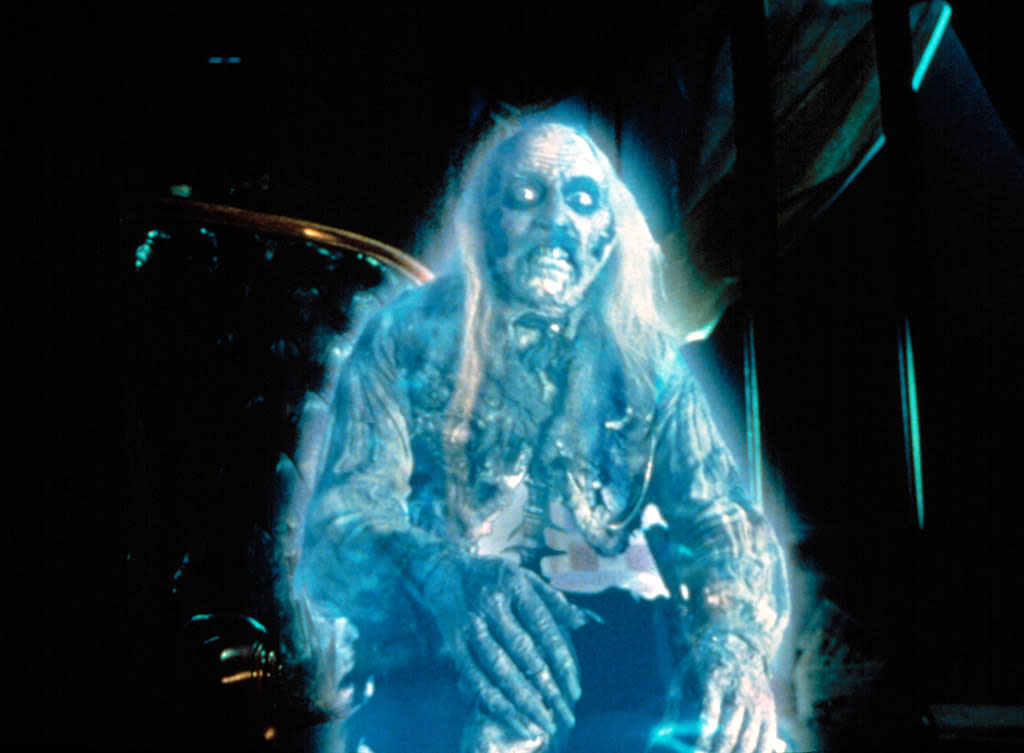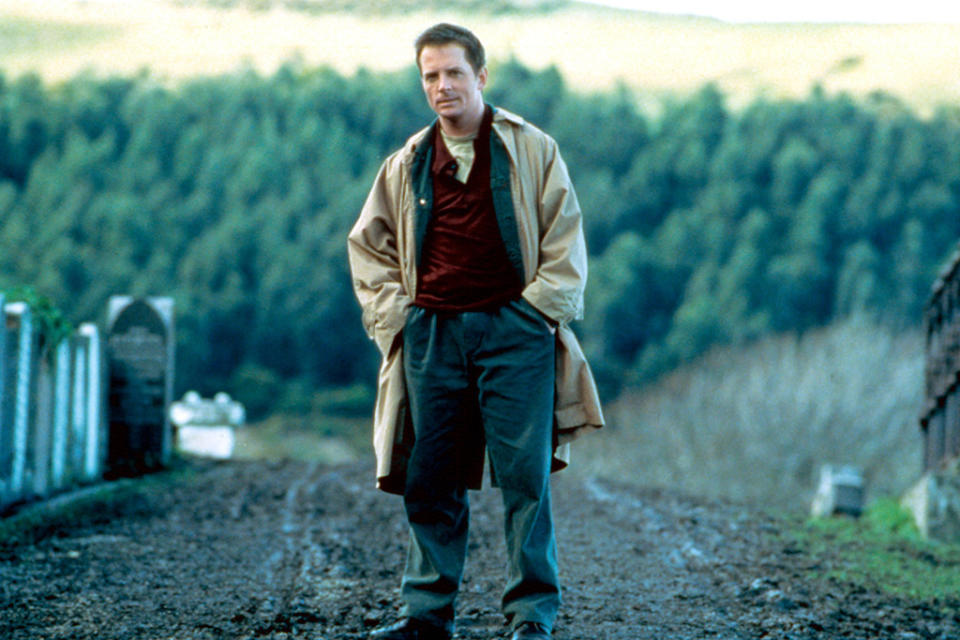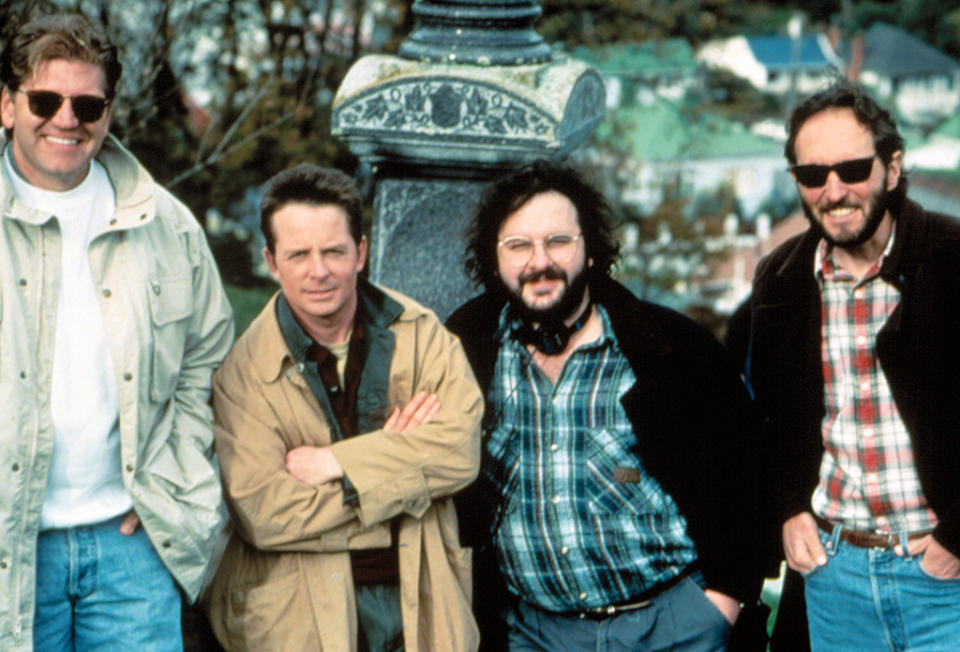'The Frighteners' Turns 20: Peter Jackson, Michael J. Fox, and Their Fascinating Horror-Comedy Bust

John Astin as one of the spirits in ‘The Frighteners’ (Everett)
Everyone’s talking about Ghostbusters, the 1984 comedy adventure about a team of paranormal experts that just got rebooted with last week’s all-female version. But this week also marks the 20th anniversary of another film that mixed inventive special effects, comedy, and horror: The Frighteners.
The Frighteners didn’t have nearly the same success as the original Ghostbusters. But it marked an intriguing turning point, both as the arrival of a talent who’d go on to have an enormous effect on Hollywood in the years to come and as the last major screen role (so far) from an iconic star. Directed by future Oscar winner Peter Jackson and starring, in his final major movie role to date, Michael J. Fox, The Frighteners follows a man who can communicate with the spirit world.
A New Zealander, Jackson had made his name with a series of scrappy, gory genres movies. His first film, the long-in-the-works, anarchic alien-invasion comedy Bad Taste became a cult hit when it was finally released in 1989. Two more disreputable, hard-R-rated movies followed, 1989’s Muppet parody Meet The Feebles and 1992’s zombie pic Braindead, and Jackson and his partner Fran Walsh were soon wooed by Hollywood.

Fox in ‘The Frighteners’ (Everett)
While in pre-production for his fourth movie, the true-crime tale Heavenly Creatures (which would win Jackson “respectable” critical acclaim for the first time), Jackson and Walsh wrote a two-page treatment for a film that would be their biggest-budget project yet. It would revolve around grieving architect, Frank Bannister (eventually played by Fox), who uses his newfound ability to see ghosts to con the locals of the small town he lives in, only to stumble into the case of a serial killer who might be murdering from beyond the grave.
Word was that Forrest Gump director Robert Zemeckis was looking for movie pitches that could be turned into movie spin-offs of the Tales From the Crypt HBO horror anthology series that he had produced. Jackson’s agent sent the Frighteners outline to Zemeckis, who loved the pitch, but as Jackson said in an interview later, “he didn’t want to use the story for Tales From the Crypt, because he thought it was unique and could stand on its own.”
The film ended up at Universal with a modest $25 million budget. Perhaps because Zemeckis, now a producer on the film, was vouching for the young director — who was just 33 at the time — Jackson was allowed to have final cut on the film. Not only that: He was allowed to shoot the U.S.-set film at home in New Zealand.
Related: ‘Independence Day’ Helped Make Will Smith a Superstar
This would prove useful in some ways. The film contained an enormous number of CGI shots for the time — 570, which Entertainment Weekly reported was more than what was in the same summer’s biggest hit Independence Day. Responsibility for creating most of the on-screen ghosts went to Jackson’s own recently-formed company Weta Digital, which were able to bring the effects in for a quarter of the price that Hollywood competitors were quoting.

Robert Zemeckis, Michael J. Fox, director Peter Jackson, and producer Jamie Selkirk on set (Everett)
As for the lead, Jackson only had one person in mind, and that was Michael J. Fox, with Jackson saying in an interview “there isn’t a long list of actors that can play comedy and drama.” Zemeckis — who had directed Fox in the Back To the Future films — arranged an introduction at the Toronto premiere of Heavenly Creatures, and Fox immediately signed up.
Production got underway in July 1995, and Universal liked what they were seeing: According to Entertainment Weekly, the film had originally been set for an October release, but was pushed up to the heart of summer blockbuster season. But studio hopes were dashed when the movie hit theaters in July 1996 — reviews were mixed at best (the LA Times called it “scary, saucy and pleasantly unsettling,” while Roger Ebert dismissed it saying, “I reviewed a nine-hour documentary about the lives of Mongolian yak herdsman, and I would rather see it again than sit through The Frighteners.) Box office was also bad, with the movie taking under $30 million worldwide.
In truth, it was probably destined to be a cult film rather than a blockbuster, with an odd mix of tones — part dark horror, part knockabout comedy, without the almost Disney-like innocence that someone like a Tim Burton was capable of bringing. It has moments of real joy and inspiration and one of Fox’s best performances. Jackson’s filmmaking is impeccable, but there’s also some really curious decisions that suggests a bunch of different films crashed into each other.
Watch a trailer for the movie:
As odd a duck as it seems, it serves as a fascinating time capsule now. Sadly for movie fans, it was Fox’s final appearance as a big-screen leading man, though he’s done voice work in animated movies and continued to act on TV. The public didn’t know it at the time, but Fox had been diagnosed with Parkinson’s disease and would later say in the January 2015 issue of Empire magazine that, though he loved the experience, it was filming in New Zealand that convinced him to give up the movies. “It was the last feature I starred in mainly because I realized that I really couldn’t be away from home for that long again,” he told the magazine. “It was a really cathartic and seminal experience for me.”
But The Frighteners was also thrilling too, the first studio-movie glimpse at what Peter Jackson was capable of with a bigger canvas. While his mix of groundbreaking visual effects, splattery gore, epic vision, unconventional casting and dark humor went unloved this time around, many of those same ingredients returned in very different form a few years later, with a project that again would have been far more expensive had Jackson not been able to make it at home in New Zealand with his Weta Digital crew. Five years on, his first Lord of the Rings movie would premiere, and five sequels and a few billion dollars later, Jackson was an Oscar winner and a household name. It was a perfection of a recipe that began with The Frighteners.

